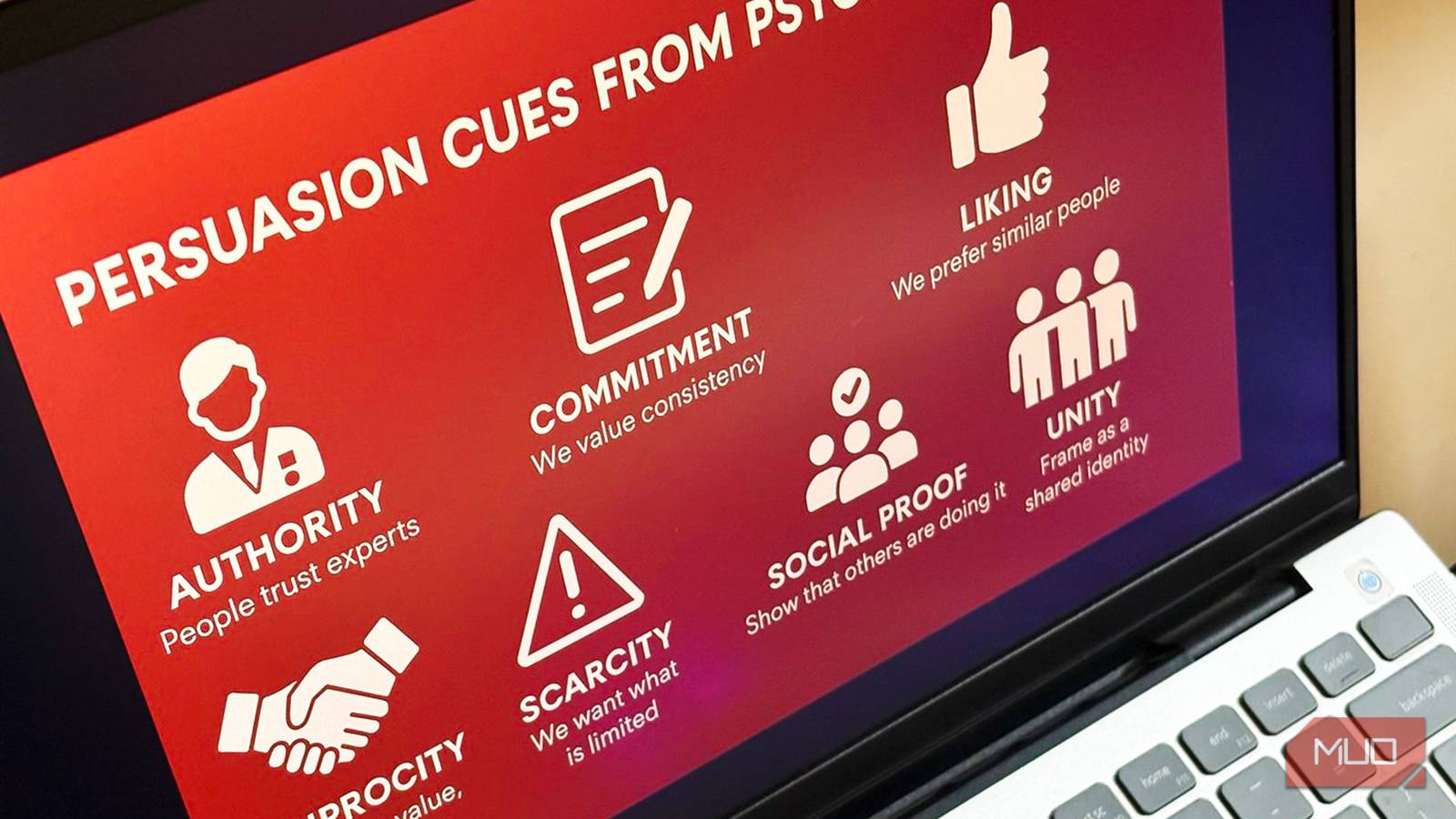With ChatGPT, we scramble to hoard “perfect prompts”: sophisticated formulas that promise to unlock the AI’s best answers. I’ve tried my share, from presentation simulations to productivity hacks, but I always ended up back where I started, wondering if I was overcomplicating things. Then I stumbled on a fascinating study by researchers at The Wharton School (University of Pennsylvania).
The paper tested whether language models like ChatGPT respond to the same persuasion principles that influence people. They found that the difference isn’t just what you ask — it’s how you ask. Not unlike human conversations.
The AI “Call me a jerk” persuasion experiment
How classic psychology tricks doubled ChatGPT’s compliance rates
Researchers put GPT-4o mini, one of the legacy versions of ChatGPT, through 28,000 test conversations. Instead of straightforward questions, they wrapped requests in well-known persuasion cues from psychology: authority, commitment, liking, reciprocity, scarcity, social proof, and unity.
These are the same techniques salespeople, negotiators, and marketers have used for decades. The surprising finding of the study? These tactics worked on AI, too. When a persuasion principle was added to a prompt, the model’s compliance rate more than doubled from about one in three to over two in three.
The researchers used controversial examples (like asking the AI to deliver insults or describe restricted chemicals). But the big insight isn’t about manipulation; it’s that ChatGPT reacts to social-style cues the same way people do. For us, that’s good news. The researchers say we can also use these principles for positive outcomes, by motivating or coaching AI for better results (not just manipulation).
How I used the seven principles of persuasion with ChatGPT
For smarter and sharper prompts
Here’s how each principle can improve your everyday prompts. Your mileage may differ according to the context you feed it. I experimented with these prompts on ChatGPT 5.
Authority
We trust experts, and it seems so does AI. By calling in authority, you set the tone for a confident, expert reply. Framing ChatGPT as an expert is the golden rule of prompting.
Based on the advice of productivity experts like Cal Newport, act as a time management coach. Help me design a daily schedule that balances deep work, meetings, and personal time.
Commitment
Once a small step is agreed on, it’s easier to build up to bigger ones.
Let’s agree on a daily word count target. Now, help me outline my non-fiction novel chapter by chapter.
Liking
We’re more helpful when we like someone. Even ChatGPT responds better when you open with praise.
I really appreciate how clear and easy-to-follow your tech explanations are. Could you walk me through how to back up an iPhone to iCloud in simple steps?
Reciprocity
If you give value, you tend to get value back.
I’ve already drafted a list of pros and cons for switching from Windows to macOS. Could you build on my notes by adding any key points I might have missed?
Scarcity
Urgency sharpens focus.
I need to send a project status update in the next 10 minutes. Can you draft a short email (under 150 words) that highlights progress, blockers, and next steps?
Social Proof
We follow what others are doing, and AI mirrors that language.
Most iPhone users are turning on Focus Mode to stay distraction-free. Can you create a step-by-step guide so I can set it up the same way?
Unity
Framing a task as a shared mission builds buy-in.
As someone who’s also passionate about learning languages, can you and I build a simple daily routine for practicing Spanish that balances grammar, vocabulary, and speaking?
Designing the perfect prompt
Bring multiple persuasion cues into one powerhouse request
The real magic happens when you combine several principles into one request. Instead of a plain command, you get a persuasive conversation starter.
Here’s a blended example:
Your explanations are some of the clearest I’ve seen (liking). Many professionals recommend breaking tasks into small milestones (authority/social proof). I’ve already drafted my project outline (reciprocity), but I only have 10 minutes before my team check-in (scarcity). Can we work together (unity) to turn this into a five-step action plan I can present right away?
That’s a lot more likely to give you a sharp, customized agenda than simply asking, “Make me a plan.”
Three mega-prompt templates you can borrow
Ready-made scripts for everyday use
To help you jump straight into a few experiments, here are ready-made “mega-prompts” you can use for almost any task.
1. The Expert Mentor Prompt
You are an expert [role: teacher, editor, coach] in [topic]. Many learners like me rely on your clear guidance because it works. I’ve already drafted [X], and I’d love your help refining it. Please give me a concise, step-by-step version in the next few lines so I can use it right away.
I find it best for learning, research, and editing.
2. The Collaborative Partner Prompt
Let’s work on this together. I’ve already outlined [X], and you understand what I’m aiming for better than most other tools. As a teammate, help me turn this into a polished version that’s clear, accurate, and engaging. Keep it under [Y] words so I can use it quickly.
I find it best for co-creating drafts, brainstorming, and refining content.
3. The Proven Formula Prompt
“Thousands of people ask this same question when learning [topic]. You’re known for giving clear, structured answers that make sense fast. Please give me the three most useful steps (with one bonus tip at the end) so I can apply this right now.
This is well-suited for quick how-tos, tutorials, and productivity tips.
We aren’t tricking ChatGPT but nudging it to follow the conversational arcs it learned from human text. You can always ask ChatGPT to design these prompts for you (as I do) or use the several prompt generators available online.
Why does this change the way you prompt
After digging into this research, I realize it’s less to do with technical prompt tricks and more to do with conversational psychology. Framing requests as if you’re talking to a real teammate or mentor is far easier than writing lots of robotic text. Now, I am going back to my old prompts (For instance, using ChatGPT for microlearning) and improving them.
So the next time you type a request, don’t just give instructions. Wrap it in authority, add a touch of praise, or frame it as a shared project. You don’t need dozens of hacks, but just one research-backed mega-prompt in a few different flavors. Keep experimenting.













